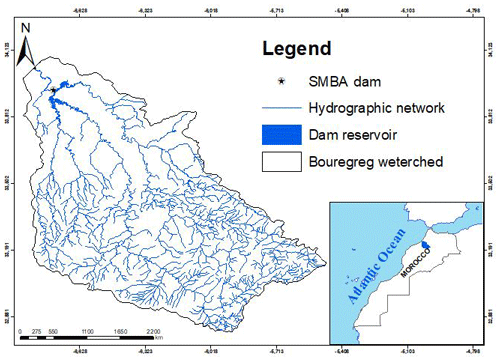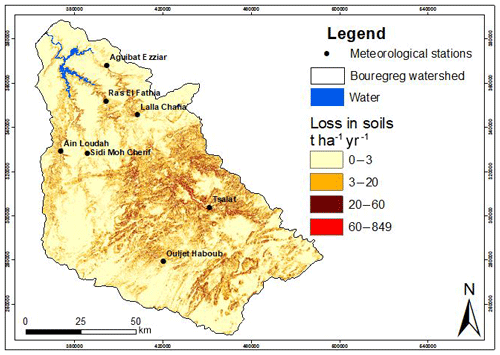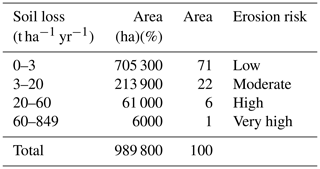Study of soil erosion risks using RUSLE Model and remote sensing: case of the Bouregreg watershed (Morocco)
The Bouregreg watershed is located to the north-western center of Morocco, characterized by a semi-arid climate. It covers a total area of approximately 10 000 km2. This basin is a very sensitive area to water erosion. This causes the degradation of its vegetation cover and its land. The most sensitive and poorly protected soils erode much more easily and lose their fertility.The objective of this work is to quantify soil losses by water erosion in the Bouregreg watershed using the Revised Universal Loss Equation (RUSLE) and Geographic Information Systems. The average annual rate of soil erosion in the Bouregreg watrershed are estimated at 20 t ha−1 yr−1. The spatial distribution map of soil erosion show that 71 % of the total area has low risk of soil erosion (<3 t ha−1 yr−1), while 28 % of the study area shows moderate to high risk of erosion (20–60 t ha−1 yr−1). Areas of very high risk of erosion are also present in some sectors of the watershed covering 1 % of the total surface.








